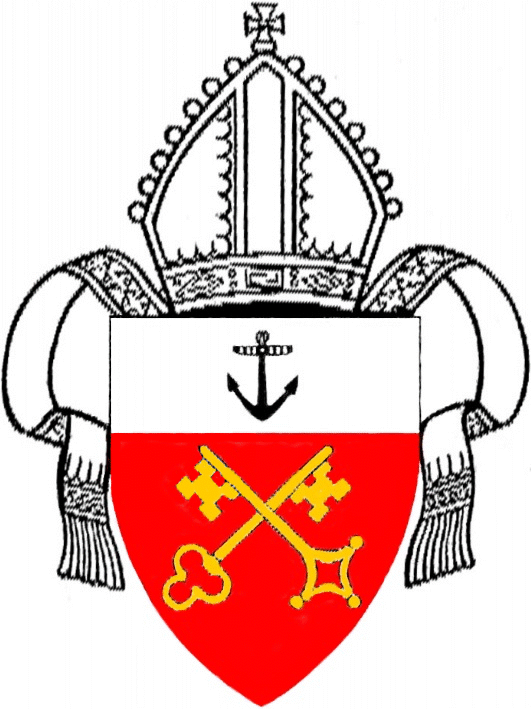Diocese of Lebombo: Difference between revisions
Jump to navigation
Jump to search
Knorrepoes (talk | contribs) m (Text replace - "'''Official blazon:'''<br>" to "====Official blazon====") |
Knorrepoes (talk | contribs) m (Text replace - "'''Origin/meaning :'''<br>" to "====Origin/meaning====") |
||
| Line 14: | Line 14: | ||
Gules, two Keys in Saltire wards downwards and outwards Or a Chief Argent thereon an anchor Sable. | Gules, two Keys in Saltire wards downwards and outwards Or a Chief Argent thereon an anchor Sable. | ||
====Origin/meaning==== | |||
The arms were officially granted on May 29, 1951 by the English College of Arms (the diocese being part of the Anglican church), but have been in use since 1893. | The arms were officially granted on May 29, 1951 by the English College of Arms (the diocese being part of the Anglican church), but have been in use since 1893. | ||
Revision as of 06:10, 2 April 2012
| Heraldry of the World Civic heraldry of Mozambique |
DIOCESE OF LEBOMBO
Denomination : Anglican
Official blazon
Gules, two Keys in Saltire wards downwards and outwards Or a Chief Argent thereon an anchor Sable.
Origin/meaning
The arms were officially granted on May 29, 1951 by the English College of Arms (the diocese being part of the Anglican church), but have been in use since 1893.
The anchor is taken from the arms of the Diocese of Cape Town, the mother diocese of all South African Anglican dioceses. The keys are the symbol of St. Peter.
Before the arms were officially granted in 1951, there have been several occassions where the keys were places upside down, such as in Cape Town cathedral.
Literature: Images and information by Mike Oettle


